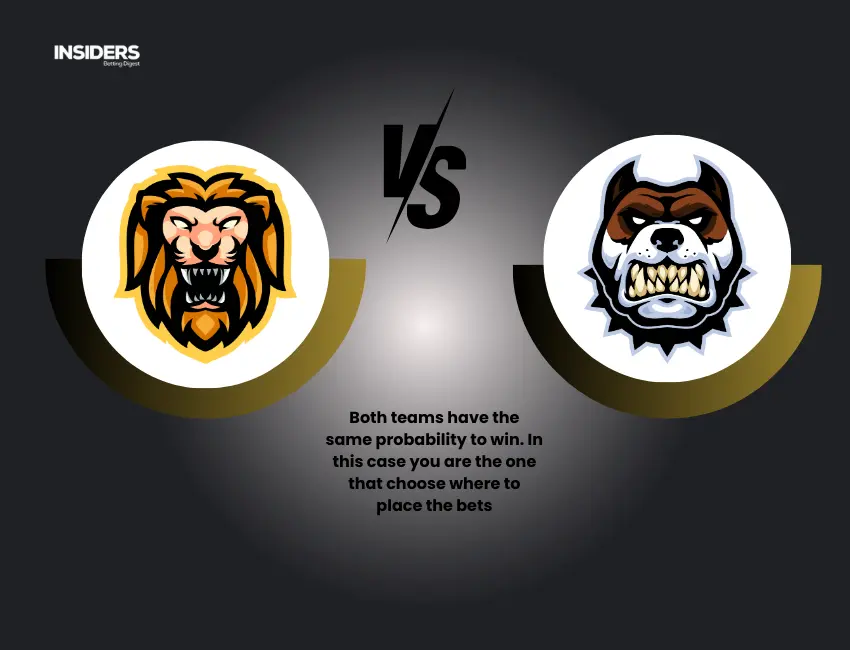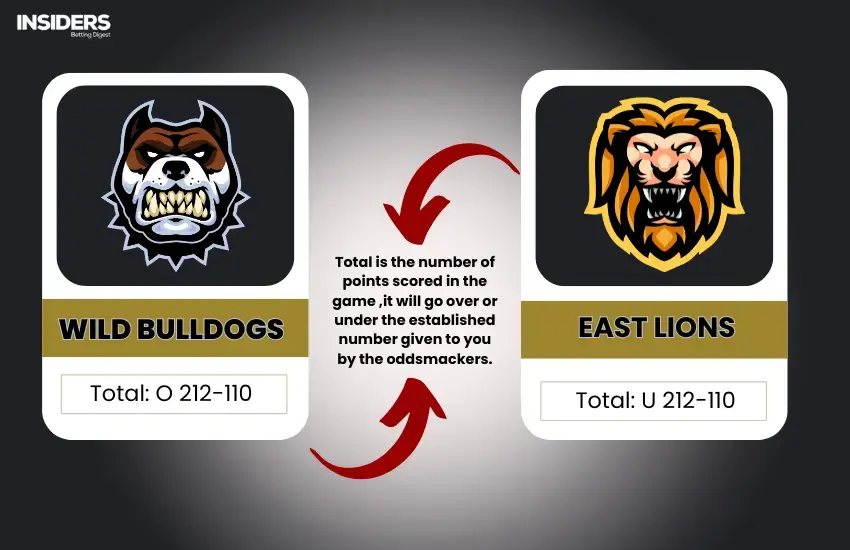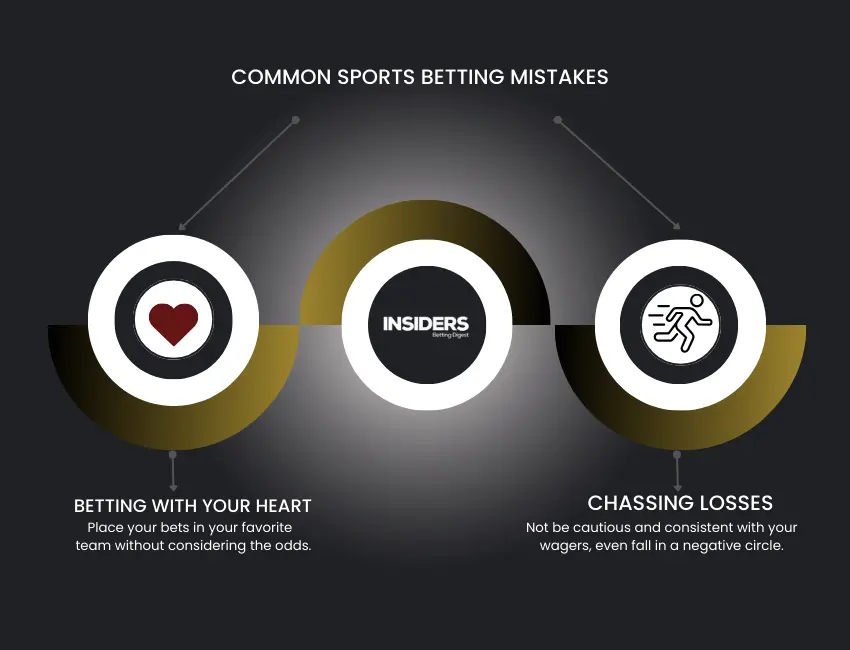
Everything You Needed To Know About Betting on Sports… But Didn’t Know Where To Ask!
Sports betting can be a lot of fun, when done right. Many sports fans have already started to bet on their favorite sports, and it’s really quite easy to do.
It might be scary at first, particularly for newcomers. That’s why we want to help you get started with a guide on how to bet on sports. With this guide you should be able to feel much more confident when placing your bets.
Sportsbooks display many statistics with plus and minus indicators, and phrases or words you might not have heard before, jargon that can be extremely confusing.
If you think about the fact that wagering real money and winning is contingent on understanding what you’re doing, you can see why this would be such a appalling and confusing venture if you do not fully understand sports betting.
What Is a Favorite?

A favorite is a team or competitor that oddsmakers believe will win, and the odds are generally shown with a negative sign in front of them. This is the team or competitor that is favored above their opponents, hence the term favorite.
When betting on a point spread, the underdog will frequently get an edge based on points to level out the wager; thus, they don’t need to win outright, just by that set margin. When betting on the moneyline, the favorite will give you.
What Is an Underdog?

Underdog is the opponent that the oddsmakers largely expect to lose .When it comes to betting on a point spread or on a moneyline, the underdogs will have a betting advantage given by oddsmakers, since it’s more difficult for them to win.
Betting on an underdog using a point spreads option, the under doesn’t need to win outright just by the margin.
What Does a Pick ‘Em Mean?

When the possibility of a win is even on both sides in terms of who the oddsmakers expect to win, it’s commonly referred to as a pick’em. You simply choose who you believe will win without having to contend with a point spreads or odds. They each have the same chances to win, according to the oddsmakers. Betting the the pick ‘em on matchups will give you an even return; in other words, the same money you bet, you get.
What Is a Point Spread?

A point spread is a margin given to the underdog used to level out the bets for two teams or contenders. To win against the point spread, the favorite must outscore the underdog by that specific margin of points.
The underdog can either win outright or the difference in scores has to be under that margin to make the bets placed on them win, even if the favorite does win.
How Do Point Spreads Work?
To see how the point spread works, use the following example. The Indiana Pacers are a -4 favorite over the Chicago Bulls, who are a +4 underdog. If you bet on the Pacers, they will deduct four points from their total after the final score is known, and if you bet on the Bulls, they will add four points to their total once the final score is known.
This will determine whether the wager was “against the spread” or not. If the Pacers beat the Bulls by a score of 100-90, all bets on Pacers at -4 would win since the team beat the four-point spread that was awarded, while all bets on Bulls at +4 would lose because the team couldn’t beat Indiana’s total even with the extra four points they got as an edge.
What Is the Moneyline ?

This is one of the best methods to make money when betting on games . The underdog is the team or individual that the oddsmakers expect to loose , seen as less likely to win a game is the favorite .
When you bet on two teams straight up , without the additional or removed points that come with a point spreads . The odds will tell you wich team is favored and witch team is the underdog , look at the odds and taking into you’re account which team has the plus and minus sign .
How Does the Moneyline Work?
Use the following example to see how the Moneyline works. If the Houston Texans played the Arizona Cardinals you would pick which team you think will win and help yourself out by looking at the odds. The odds will tell you which team is favored and which team is the underdog. In this game, the Texans, as favorites, could have a -200 Moneyline and the Cardinals, as the underdogs, might have a +180 Moneyline.
The Texans are the favorite to win the game and the Cardinals are the underdog. You can tell this by looking at the odds and taking into account which team has the plus and which has the minus sign. To win $100 at these odds, you would have to put $200 on the Texans to win $100. If you bet $100 on the Cardinals, you would win $180.
What Is a Total?

A total is the number of points scored in a game. The lines for the total number of points scored by both sides in a game are frequently released by oddsmakers and sportsbooks, and bettors can wager on whether the total will be over or under the figure specified.
Wins in a season can also be calculated using totals. Season win totals are, in fact, among the most popular wagers in all major sports, particularly in the NFL. A sportsbook or oddsmaker will establish a line for the number of victories a team will have in a regular season.
What Is a Prop Bet?

Prop betting, also known as propositional betting, allows you to wager on certain events within a game, series, or season. The game’s outcome is not included in these events. This is a very popular way to place bets on the game.
In terms of what you can wager on, prop bets vary from sportsbook to sportsbook. However, there are a few standard ones you’re likely to come across wherever you choose to place your bets.
Props such as which team will score the game’s first goal or whether a notable player will score a goal/point, for example, are almost universally accepted by bookmakers.
Where Can I Bet on Sports?
You can bet on sports anywhere gambling is legal. If you are able to use an application to online bet, you can do that. You can also place bets on sports at a sportsbook within a casino. Sports gambling is sweeping the nation and there are more and more options available every day.
Never make a bet at a sportsbook that is unlicensed. Without a license, that sportsbook can take your money and your winnings. You can lose a lot of money by using a sportsbook that is unlicensed.
This is the main thing you need to watch out for when trying to find a spot to make your bets. Make sure that you read reviews on sportsbooks and the apps you are going to use before placing a deposit.
How Much Should You Bet?

“Only bet what you can afford to lose,” a wise man once said. This holds true for stock investing, poker, and, most notably, sports betting. Only wagering in sums you are comfortable with is part of smart bankroll management, and keep in mind that everyone’s thresholds are different.
Sports bettors frequently refer to the amount of money wagered as “units.” A unit is a fixed wager size that a bettor will employ as an average stake. The bettor will next decide how many units to wager based on whether the bet is prudent or aggressive.
It is typically recommended that bettors risk between 1% and 5% of their bankroll on each individual wager, depending on their level of confidence in the bet. For a sports bettor, the lower end of the range, 1 percent, is frequently one unit.
Can Odds Change?

In the vast majority of cases, the odds are always shifting. Oddsmakers and sportsbooks are continuously striving to establish and maintain the ideal middle ground in a wager, and to do so, they frequently need to change one side of a bet or both sides.
Too much money on one side or the other can lead the odds or point spread to be modified, and there are other factors such as weather or injury news that can influence how a game plays out and force oddsmakers to adapt.
It’s perfectly usual for odds or points spreads to change. The odds and points spread at a sportsbook can and will adjust over time, just like stock market pricing may and will. Changes in odds and line movement might be beneficial, but they can also be detrimental. This is why when trying to place a wager it’s a good idea to monitor line movements.
What Happens If There Is a Tie?
In sports betting, a tie is commonly referred to as a “push.” If you bet on the moneyline and the game ends in a tie, you’ll most likely get your money back. The same can be said for a point spread if the game ends in a tie.
What Are Some Common Sports Betting Mistakes?

One mistake sports bettors make is betting on their favorite team. Many gamblers fall into the trap of betting with their hearts. There is a strong temptation to wager on a favorite team without considering the odds or evaluating the match data. This type of blind betting may work once or twice, but it will only lead to disappointment in the long run.
It doesn’t matter how great you think your favorite team or player is, you must maintain objectivity. Betting is based on cold, hard facts, statistical analysis, probability, and a fair amount of chance. In betting selections; sentimentality has no role here.
Another big mistake sports bettors make is chasing losses. In sports betting, this is a massive no-no. Betting is just like the sporting event itself. Losses are unavoidable and cannot be avoided altogether. It’s best if you accept this as soon as possible.
Attempting to recoup your losses by betting larger or more frequently on other games is a negative cycle. Desperate bets are unreliable because they aren’t well-thought-out or planned. Instead, be cautious and consistent with your wagers, and your losses will eventually balance out.
Many sportsbooks let you establish betting and deposit restrictions when you sign up, which can assist you in avoiding this trap.
Avoid the Trap of Betting on Unfamiliar Sports
The last big mistake sports bettors make is betting on sports that they do not know. This may sound like a no-brainer, but it happens far too frequently, especially during high-profile tournaments or matches.
For example, in the run-up to a major boxing event, media attention frequently entices casual and beginner gamblers. They have no knowledge of the sport, the participants, the competition, the rules, the history, and have not followed the sport until this fight.
They become enamored with the talk surrounding the fight and, more often than not, lose the wager. It’s a fantastic way for bookmakers to make a profit off you!
A smart bettor is one who understands the stakes. You don’t have to be an expert, but it’s a good idea to have a basic understanding of the sport and how it works if you want to beat the odds. You will be able to refer back to this guide whenever you may need information.
If you want to become a good casual bettor with the best guide, Follow us on Twitter.
How To Bet on Sports - FAQs
A favorite is a team or competitor that oddsmakers believe will win, and the odds are generally shown with a negative sign in front of them.
An underdog, in a contrast to a favorite, is a team or opponent that oddsmakers expect to lose.
A point spread is used to level out a bet between two teams.
A total is the number of points scored in a game.
One mistake that sports bettors make is betting on their favorite team. Many gamblers fall into the trap of betting with their hearts.


